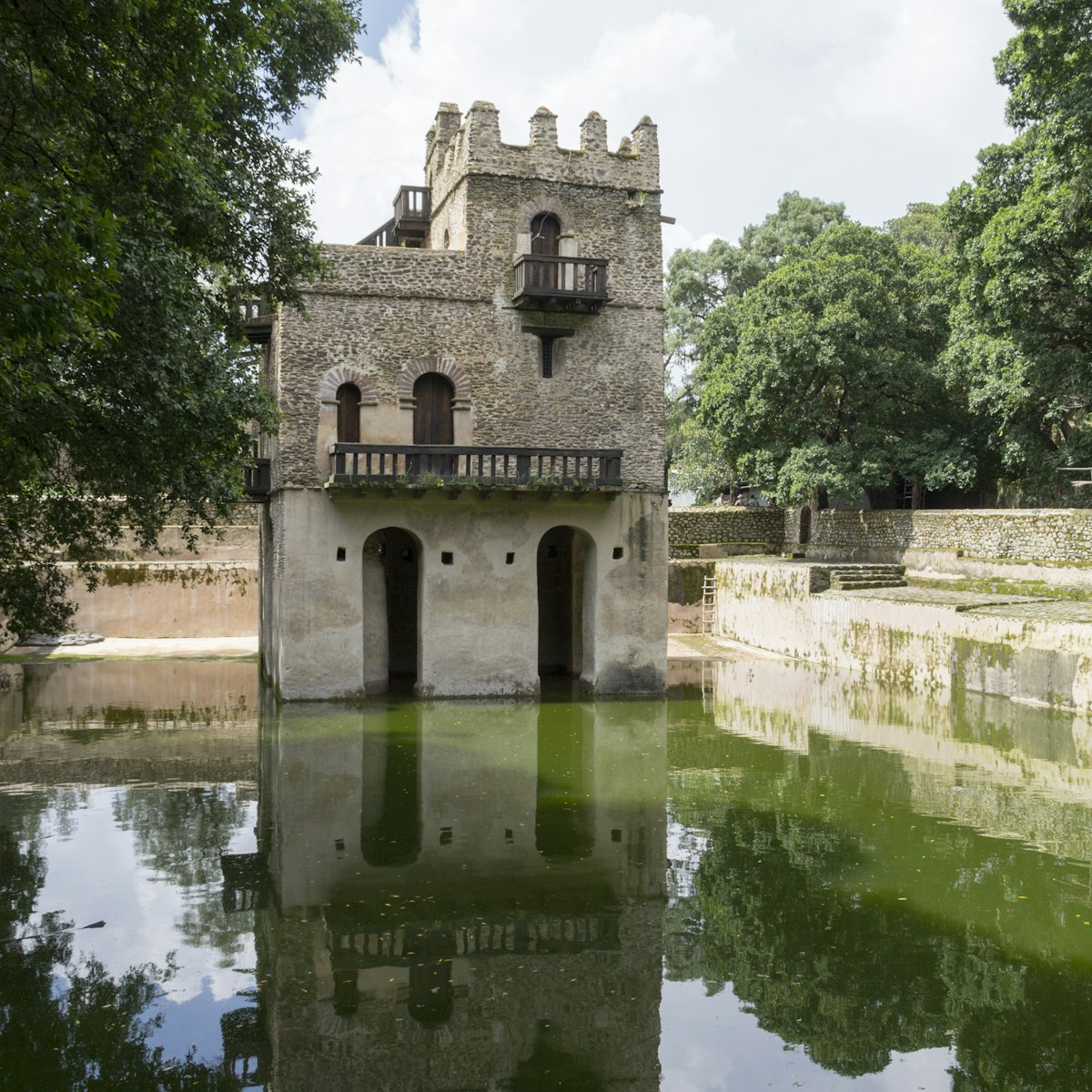It mightn't be as well-preserved as the Royal Enclosure, or as sacred as Debre Berhan Selassie, but what this royal compound, known as Kuskuam, lacks in order and holiness it more than makes up for in melancholy. The complex was built in 1730 for the redoubtable Empress Mentewab, after the death of her husband (Emperor Bakaffa).
It’s said that Mentewab chose to move out here because she was a bit too keen on male companions and living out here would keep her out of gossip’s way. Gossip and the boys didn’t stay away though: according to locals, when James Bruce stayed here with the empress during his explorations of the highlands, he got to discover more than just the source of the Blue Nile.
Like the Royal Enclosure, the complex is made up of a series of buildings, including a long, castellated palace used for state receptions and to house the royal garrison. Its exterior is trimmed with red volcanic tuff – figures include St Samuel, a lion and the same Gonderian crosses as on her palace in the Royal Enclosure. Her palace and several nearby buildings were damaged by the British during WWII.
There used to be a fine church here, but that was destroyed by the Dervishes and the rebuilt sanctuary is uninspiring. The star attraction in the adjacent museum, under one of the egg-shaped towers, is a small glass-fronted coffin with the remains of the empress, her son Emperor Iyasu II and her grandson Iyo’as, the last emperor of Gonder. Below the complex lies a series of tiny doll-sized mud-and-stick houses that religious students live in while training to become monks or priests.
The complex lies in the hills 4km northwest of town. A bajaj from the piazza, taking in the palace and Fasiladas’ Bath, should cost about Birr100 return.



